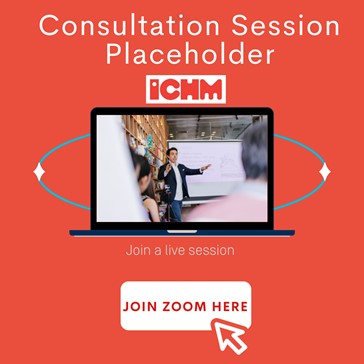Welcome to Topic 4: Managing and Coping with Change Building Resilience. All organisations go through some sort of change at some point. It is important to ensure that change is embraced by the employees.
In this topic you will learn about:
- Organisational structure and change
- Planning and executing change effectively
- Organisational control.
These relate to the Subject Learning Outcomes:
- Assess the key principles and theories underlying strategic people management and explain how their application enhances organisational and individual performance.
- Evaluate the effectiveness of different approaches of leadership and the relationships between effective people management and organisational performance.
- Demonstrate effective communication and practical problem-solving skills to effectively manage people in a range of organisational contexts.
- Reflect on the roles and functions that managers perform in the context of the challenges and risks they experience in the changing environment.
Welcome to your pre-seminar learning tasks for this week. Please ensure you complete these prior to attending your scheduled seminar with your lecturer.
Click on each of the following headings to read more about what is required for each of your pre-seminar learning tasks.
Read the following textbook chapters:
- Chapter 7 pp. 290-3278 & Chapter 15 pp. 612-657 from University of Minnesota 2015, Principles of management, University of Minnesota Libraries Publishing edition.
Read the following web articles:
- Kogan, V 2020, Three tips for managing resistance to change, Forbes .
- Polly, RG 2015, Organizational change: why resilience is the key to change management, Linkedin.
Read the following textbook chapter:
- Chapter 18 from Schermerhorn Jr., JR, Davidson, P, Woods, P, Factor, A, Junaid, F & McBarron, E 2019, Management, 7th Asia-Pacific edn., John Wiley & Sons Australia.
Case study 1
- Read the case study, 'Newell Rubbermaid leverages cost controls to grow' p. 615 from the prescribed text, University of Minnesota 2015, Principles of management, University of Minnesota Libraries Publishing edition.
- Task: Go to Topic 4: Forum Activity 1 to review the questions and post your answers. You can access the activities by clicking on the links in the topic. You can also navigate to the forum by clicking on 'MGT100 Subject Forum' in the navigation bar for this subject.
Case study 2
- Read the case study, 'Toyota Struggles with Organisational Structure' p. 293 from the prescribed text, University of Minnesota 2015, Principles of management, University of Minnesota Libraries Publishing edition.
- Task: Go to Topic 4: Forum Activity 2 to review the questions and post your answers.
Read and watch the following content.

Organisational structure and change
An organisational structure describes how individuals and teams will coordinate and work within the organisation. The structure is an important aspect in achieving coordination because it connects departments in order to achieve organisational goals (University of Minnesota 2015).
There are four (4) aspects that are regarded as the building blocks of an organisational structure. These include:
- Centralisation
- Formalisation
- Hierarchical levels
- Departmentalisation.
The following video provides you with details of each of these four (4) aspects.
Planning and executing change effectively
How do you plan, organise and execute change effectively? Depending on the situation, changes in organisations can work positively or negatively. It is very important that during any given circumstance, we remain fair and make ethical decisions (University of Minnesota 2015).
One of the key frameworks used in managing change is the three (3) stage model of planned change by psychologist Kurt Lewin (Lewin 1951).
Lewin (1951) indicates that change is needed to transform behaviours and make them the norm in organisations. The three (3) stages include:
- Unfreezing
- Changing
- Refreezing.
The following figure illustrates each stage of this model. This model assumes there will be resistance towards change.
Unfreezing
Unfreezing refers to people that are naturally resistant to chance and creating awareness or acceptability of change. When employees are unprepared, they are more likely to resist the change and less likely to operate effectively under the new system” (University of Minnestoa 2015). Communication is critical in the unfreezing stage as it is essential in helping employees understand the need for change, and thus accept the change.
Changing
Changing is when employees are ‘unfrozen’ and new behaviours, processes and ways of thinking are introduced. It is important that employees are prepared for this through education, clear communication and support from the organisation. Communication is still important in this stage to ensure employees continue to understand the need for the change.
Refreezing
Refreezing is the final stage and refers to employees accepting the change and is essential to ensuring that people do not revert back to their old behaviours. Rewards and acknowledgements at an individual level are used to reinforce the new state of change. These three stages are important to understanding how people react to change and how to manage it effectively.
Overcoming resistance to change
There may be instances when you might feel that individuals are not convinced by your excellent ideas for the improvement of the organisation. When trying to win people over to accept your proposed change, consider the following:
- Involve those around you in planning the change
- Assess your credibility
- Present data to your audience
- Appeal to your audience’s ideals
- Understand the reasons for resistance (McGoon 1995; Michelman 2007; Stanley 2002).
How would you try to overcome resistance to change?
Organisational control
It is important to have good control over your organisation. It provides many benefits, most importantly to ensure the organisation is on the correct path to reach its goals and implement its strategies. The fourth component of the P-O-L-C framework is organisational control, which refers to the ways in which members attain organisational goals and objectives (University of Minnesota 2015). The performance of the organisation can improve when relevant controls are implemented.
Costs
Controls can cost the organisation in several areas (Ghoshal & Moral 1996), including:
- Financial
- Damage to culture and reputation
- Decreased responsiveness
- Botched implementation.
It is true control comes at a cost however most controls are valid and valuable management tools. If control is well designed and strategically implemented it would provide at least five (5) areas of benefit including:
- Improved cost and productivity control
- Improved quality control
- Opportunity recognition
- Better ability to manage uncertainty and complexity
- Better ability to decentralise decision making.
Cost can be controlled by allocating budgets, where managers compare actual expenses to forecasted ones. Similarly, productivity can be controlled by comparing how much each person can produce, in terms of service or products (Ghoshal & Moral 1996).
Types and levels of control
Organisational controls can be categorised into two (2) areas:
- Strategic controls
- Management controls are sometimes called operating controls (Harrison & St. John 2002).
Strategic control
Strategic control focuses on keeping track of current strategies and strategies that are to be implemented, detecting any problem areas that have arisen.
Operational control
Operational control overlooks the functions that the strategy has established.
Between the previously mentioned controls, there are several levels of control as well, including the following.
Productivity
Productivity is identified as monitoring a problem in-order to prevent any negative outcomes. In management, this is referred to as feedforward control. The main goal of feedforward control is to see the problems coming in time to do something about them. We can describe concurrent control as real-time control because it deals with the present scenarios.
Behavioural controls
Behavioural controls involve the direct evaluation of managerial and employee decision making, not of the results of managerial decisions.
All these types of control function as a feedback mechanism to help leaders and managers make adjustments in the strategy, as perhaps is reflected by changes in the planning, organising, and leading components (Matthews 1999).
You might be wondering what this has to do with building resilience at work. Change is inevitable and organisations that build employees that are resilient to change are better equipped to withstand uncertainty. Resilience is a complex concept and is sometimes the words ‘bounce back’ ‘recoil’ are used to describe resilient people (McEwen 2011). Everyone copes with change differently and organisations face many internal and external changes ranging from a pandemic, changing suppliers, new staff, restructures and much more. If you’ve spent time in a workplace, you may have noticed some people bounce back from change more easily than others. So what does it take to bounce back? How do some people manage this so well? The answer to this is resilience. An employee that is adaptable is a massive asset to an organisation. Leaders should ensure they support employee’s emotional wellbeing and have open communication. Ensuring that they are supported will contribute to performance outcomes and help to build a more resilient team. Do you think you have resilience to change or is this something you might build over time?
Knowledge check
Complete the following two (2) tasks. Click the arrows to navigate between the tasks.
Key takeouts
Congratulations, we made it to the end of the fourth topic! Some key takeouts from Topic 4:
- The degree to which an organisation is centralised and formalised the number of levels in the organisation hierarchy, and the type of departmentalisation the organisation uses.
- One of the biggest obstacles in an organisation change is the resistance to change.
- Organisational controls lead to better performance by executing the company mission and vision.
Welcome to your seminar for this topic. Your lecturer will start a video stream during your scheduled class time. You can access your scheduled class by clicking on ‘Live Sessions’ found within your navigation bar and locating the relevant day/class or by clicking on the following link and then clicking 'Join' to enter the class.
Click here to access your seminar.
The learning tasks are listed below. These will be completed during the seminar with your lecturer. Should you be unable to attend, you will be able to watch the recording, which can be found via the following link or by navigating to the class through ‘Live Sessions’ via your navigation bar.
Click here to access the recording. (Please note: this will be available shortly after the live session has ended.)

In-seminar learning tasks
The in-seminar learning tasks identified below will be completed during the scheduled seminar. Your lecturer will guide you through these tasks. Click on each of the following headings to read more about the requirements for each of your in-seminar learning tasks.
Work in a breakout room assigned by your lecturer during the scheduled seminar. Discuss the following topic with your peers. Your lecturer will request that you present the findings back to the class.
Discussion topic: Explain what organisational structure is and its basic elements.
In the same breakout room, discuss the following topic with your peers. Your lecturer will request that you present the findings back to the class during the scheduled seminar. You will also be required to write your thoughts in a shared word document and present this back to the class.
- Why do you think organisations change? Identify and described three (3) organisations that have recently gone through a change.
- Why do you think employees would resist such changes?
Welcome to your post-seminar learning tasks for this week. Please ensure you complete these after attending your scheduled seminar with your lecturer. Your lecturer will advise you if any of these are to be completed during your consultation session.
Complete this task during the consultation session.
Task: Go to Topic 4: Forum Activity 3 to review the questions and post your answers.
Complete this task during the consultation session.
Task: Go to Topic 4: Forum Activity 4 to review the questions and post your answers.
You should have completed a full draft of Assignment 1 and be ready to proofread your document.
Each week you will have a consultation session, which will be facilitated by your lecturer. You can join in and work with your peers on activities relating to this subject. These session times and activities will be communicated to you by your lecturer each week. Your lecturer will start a video stream during your scheduled class time. You can access your scheduled class by clicking on ‘Live Sessions’ found within your navigation bar and locating the relevant day/class or by clicking on the following link and then clicking 'Join' to enter the class.
Click here to access your consultation session.
Should you be unable to attend, you will be able to watch the recording, which can be found via the following link or by navigating to the class through ‘Live Sessions’ via your navigation bar.
Click here to access the recording. (Please note: this will be available shortly after the live session has ended.)

- Anderson, D 2019, Netflix Inc.’s organisational culture & its strategic implications, Rancord Society.
- Taets, J 2021, Creating a change-resilient organization, Forbes.
References
- Ghoshal, S & Moran, P 1996, ‘Bad for practice: A critique of the transaction cost theory’, Academy of Management Review, 21(1):13-47.
- Harrison, JS & St. John, CH 2002, Foundations in strategic management, 2nd edn., South-Western College.
- Lewin, K 1951, Field theory in social science, 1st edn., New York: Harper & Brothers.
- Matthews, J 1999, ‘Strategic moves’, Supply Management, 4(4):36-37.
- McEwan, K 2011, Building resilience at work, Australian Academic Press.
- McGoon, C 1995, Secrets of building influence, Communication World.
- University of Minnesota, 2015, Principles of management, University of Minnesota Libraries Publishing Edition.

